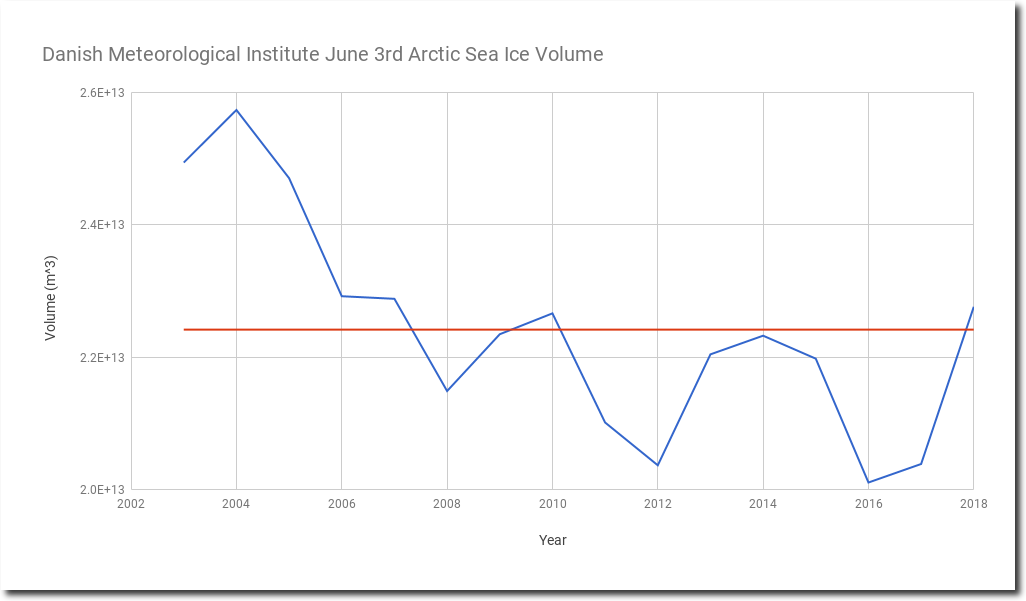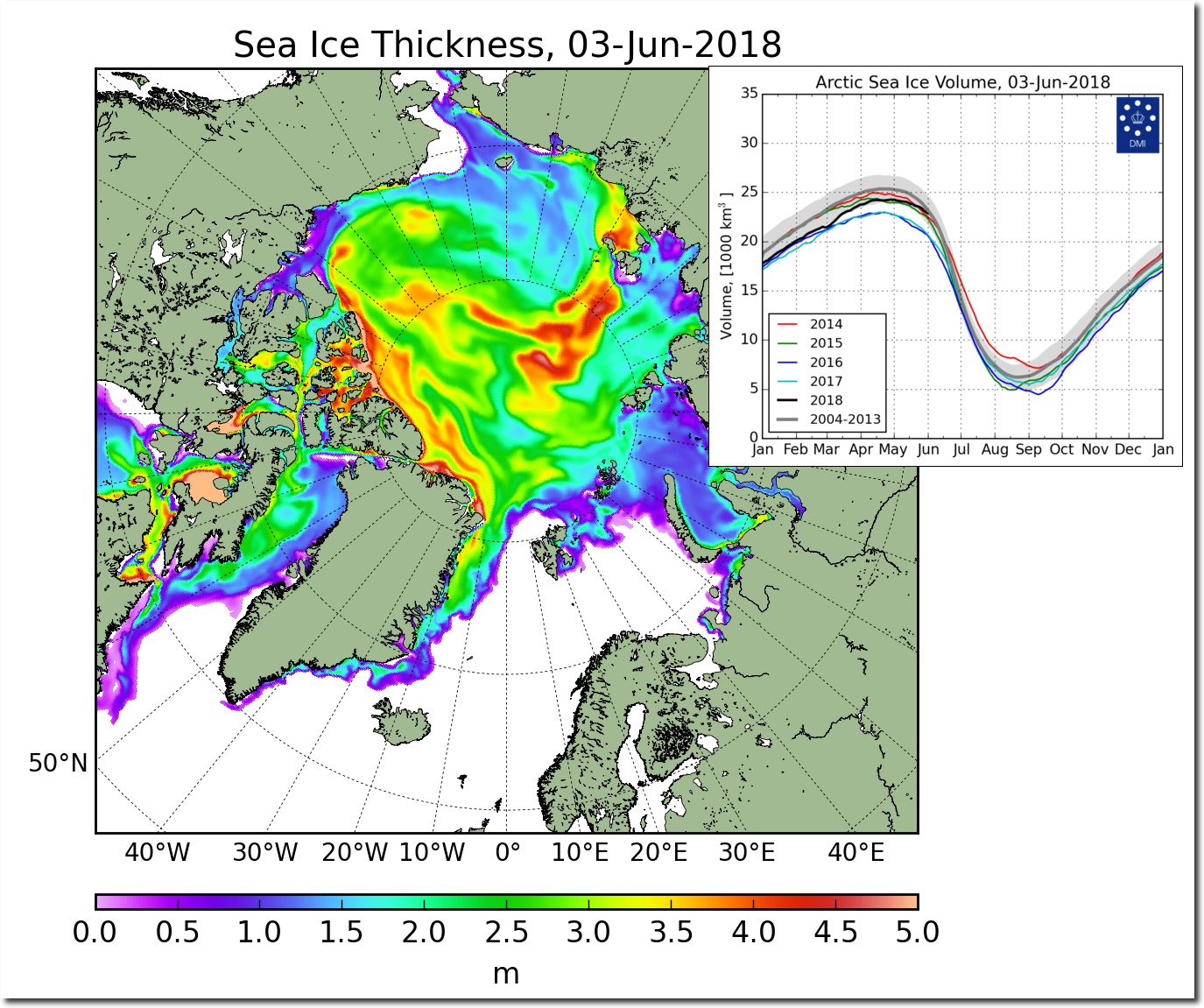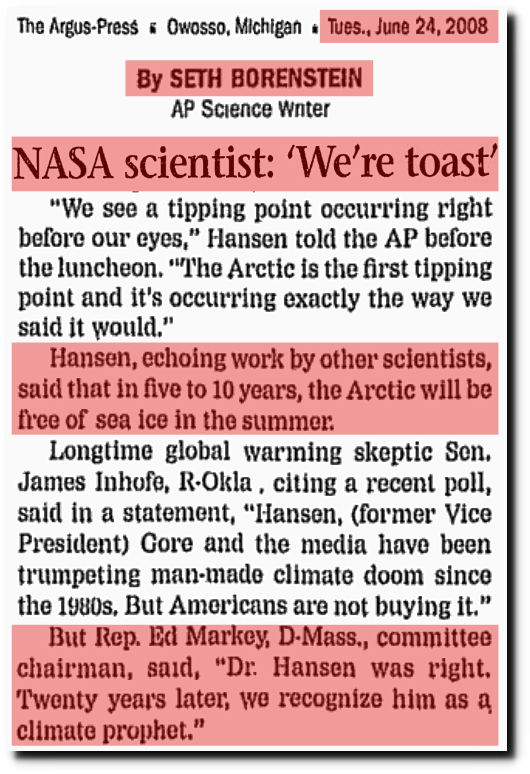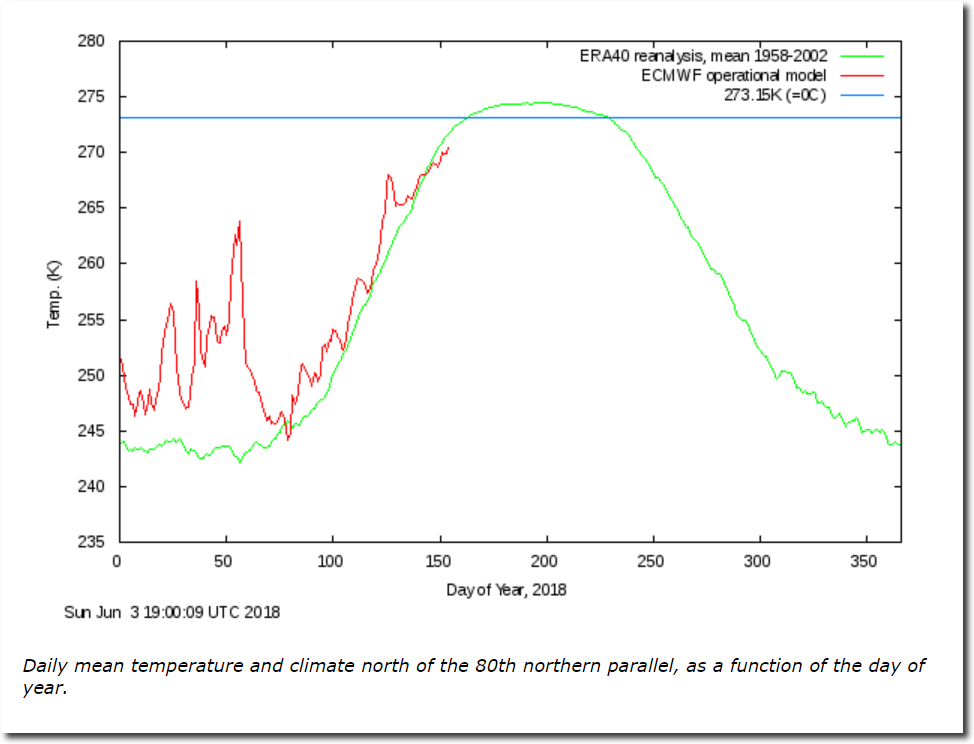According to the Danish Meteorological Institute, Arctic sea ice volume is highest for the past eleven years and above the fifteen year mean since the start of DMI records in 2003.
http://ocean.dmi.dk/arctic/icethickness/txt/IceVol.txt Spreadsheet
FullSize_CICE_combine_thick_SM_EN_20180603.png (1337×1113)
But fear not climate alarmists. Your #1 prophet says the Arctic will be ice-free in a few weeks. He only needs to melt 22.8 trillion cubic meters of ice, with temperatures far below normal, and far below the freezing point.
The Argus-Press – Google News Archive Search
Here is what Arctic sea ice volume has done since the day Hansen made that prophecy – “echoing work by other scientists.”
The North Pole normally starts melting this week for 70 days, but looks like melt will be delayed again this year due to below freezing temperatures.
Ocean and Ice Services | Danmarks Meteorologiske Institut
And with Reggie’s current legal problems, he probably won’t be able to help out with his blowtorch.







